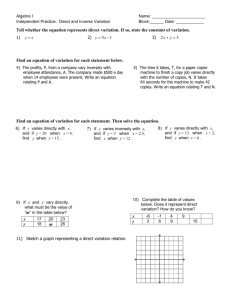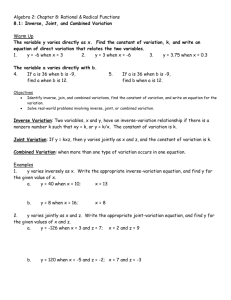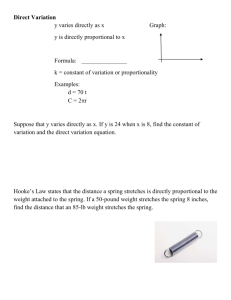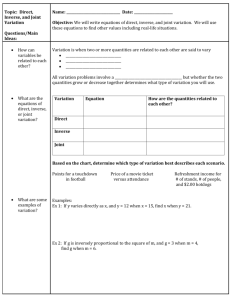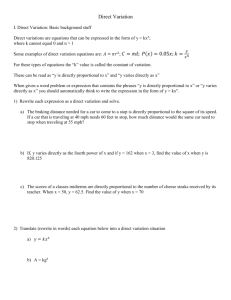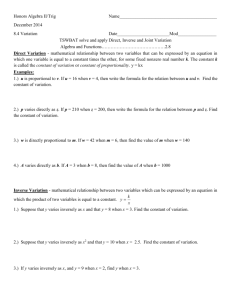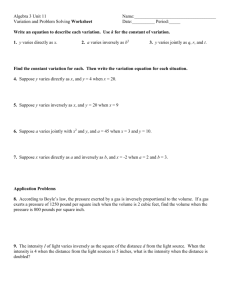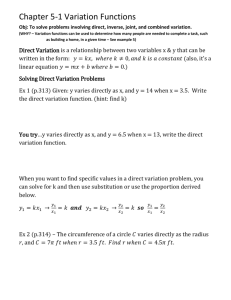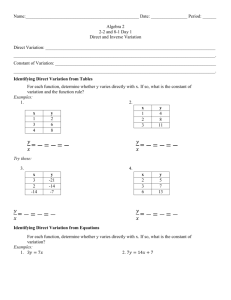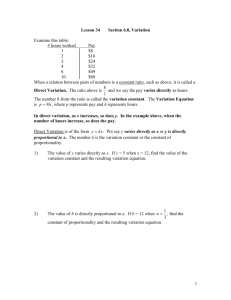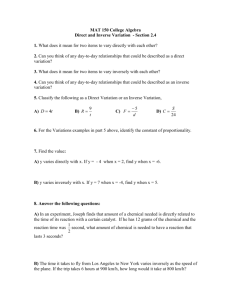Direct, Inverse, and Joint Variation
advertisement
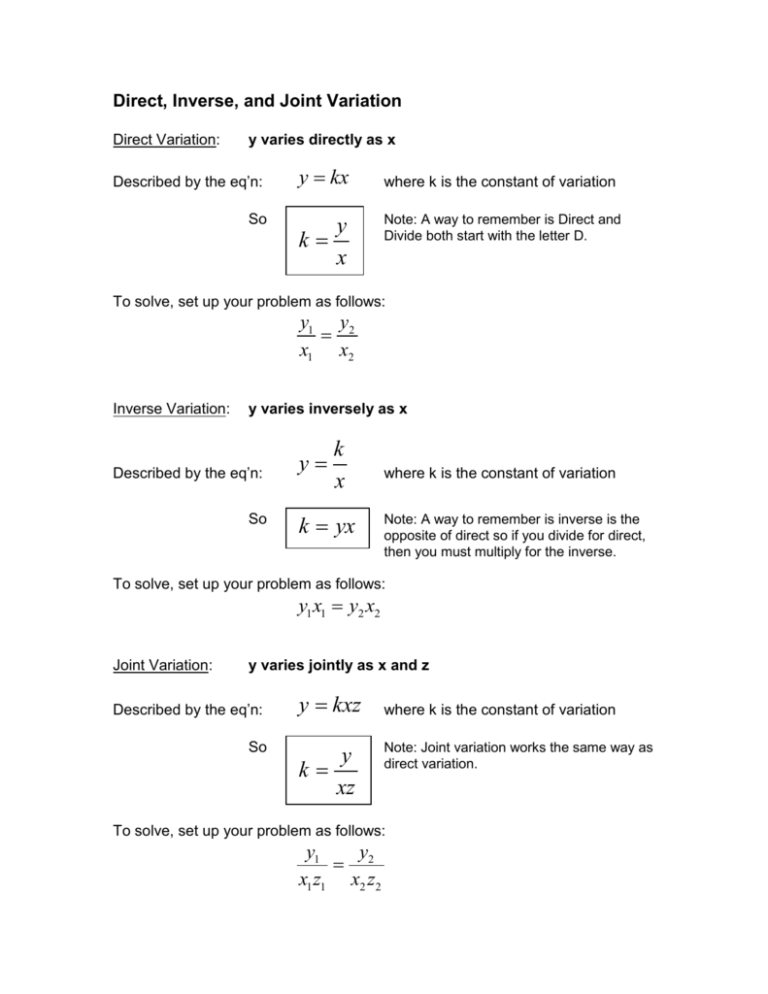
Direct, Inverse, and Joint Variation Direct Variation: y varies directly as x Described by the eq’n: So y kx y k x where k is the constant of variation Note: A way to remember is Direct and Divide both start with the letter D. To solve, set up your problem as follows: y1 y2 x1 x2 Inverse Variation: y varies inversely as x Described by the eq’n: So y k x k yx where k is the constant of variation Note: A way to remember is inverse is the opposite of direct so if you divide for direct, then you must multiply for the inverse. To solve, set up your problem as follows: y1 x1 y2 x2 Joint Variation: y varies jointly as x and z Described by the eq’n: So y kxz y k xz where k is the constant of variation Note: Joint variation works the same way as direct variation. To solve, set up your problem as follows: y1 y 2 x1 z1 x2 z2 Examples: 1. If y varies directly as x and y = 6 when x = 11, find y when x = 3, find y. 2. Find x when y = 8 if x varies directly as y and y = 2 when x = 5. 3. If y varies inversely as x and y = 5 when x = 2 find y when x = 12. 4. Find y when x = 18 if x varies inversely as y and y = 3 when x = 4. 5. y varies inversely as x and directly as z. y = 20 when x =5 and z = 2. Find z when y = 1- and x = 30. 6. y varies directly as x and inversely as z, y = 3 when x = 6 and z = -4. Find z when y = -5 and x = 10. 7. Find y when x = 4 and z = 15, if y varies jointly as x and z and y = 5 when z = 8 and x = 10. 8. Find y when x = 12 and z = 2. if x varies jointly as y and z and y = 24 when z =3 and x =1. 9. z is inversely proportional to the square of y and directly proportional to x. Solve for x. 10. Volume (V) of a gas is directly proportional to Temperature (T) and inversely proportional to the pressure (P). Solve for P.
